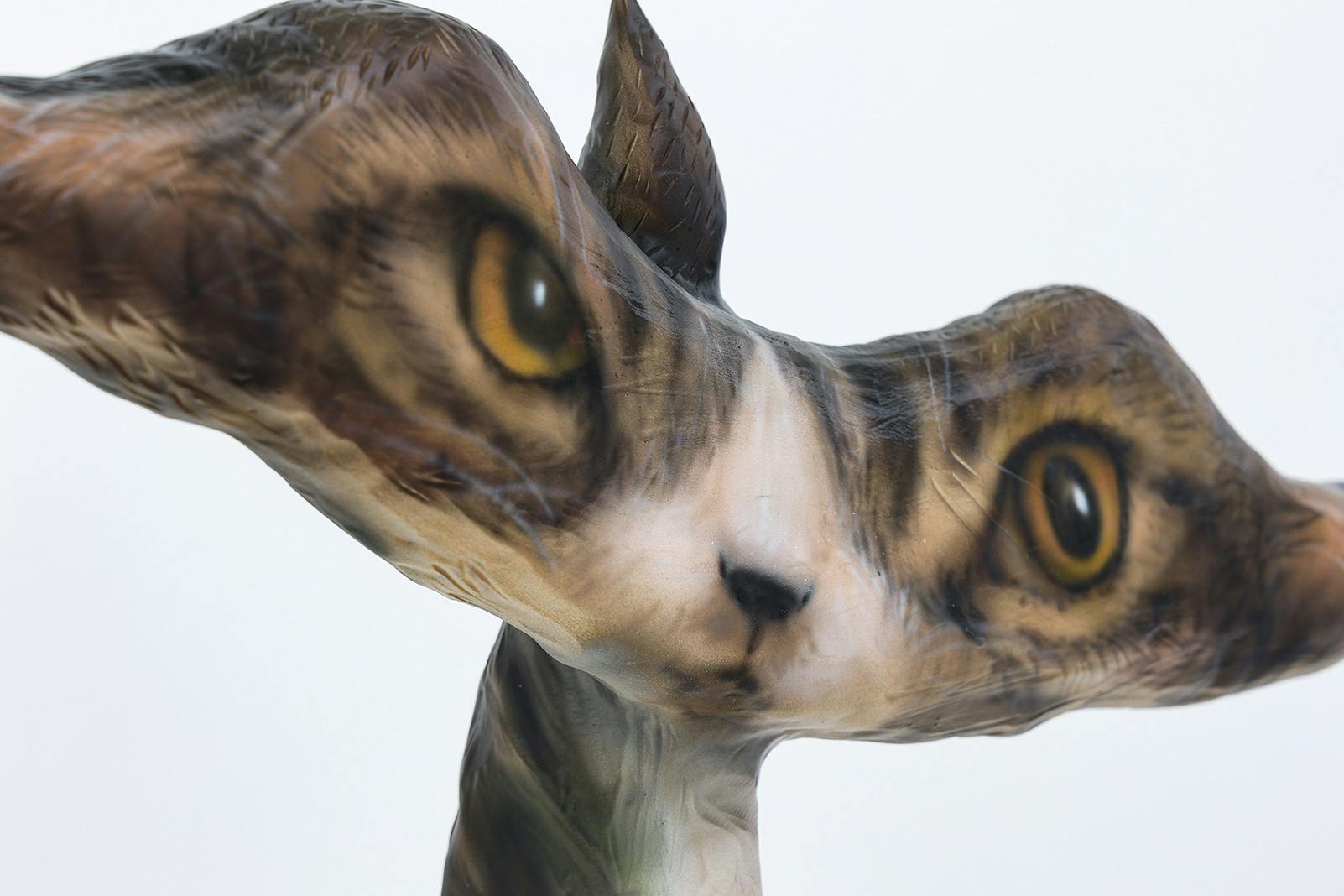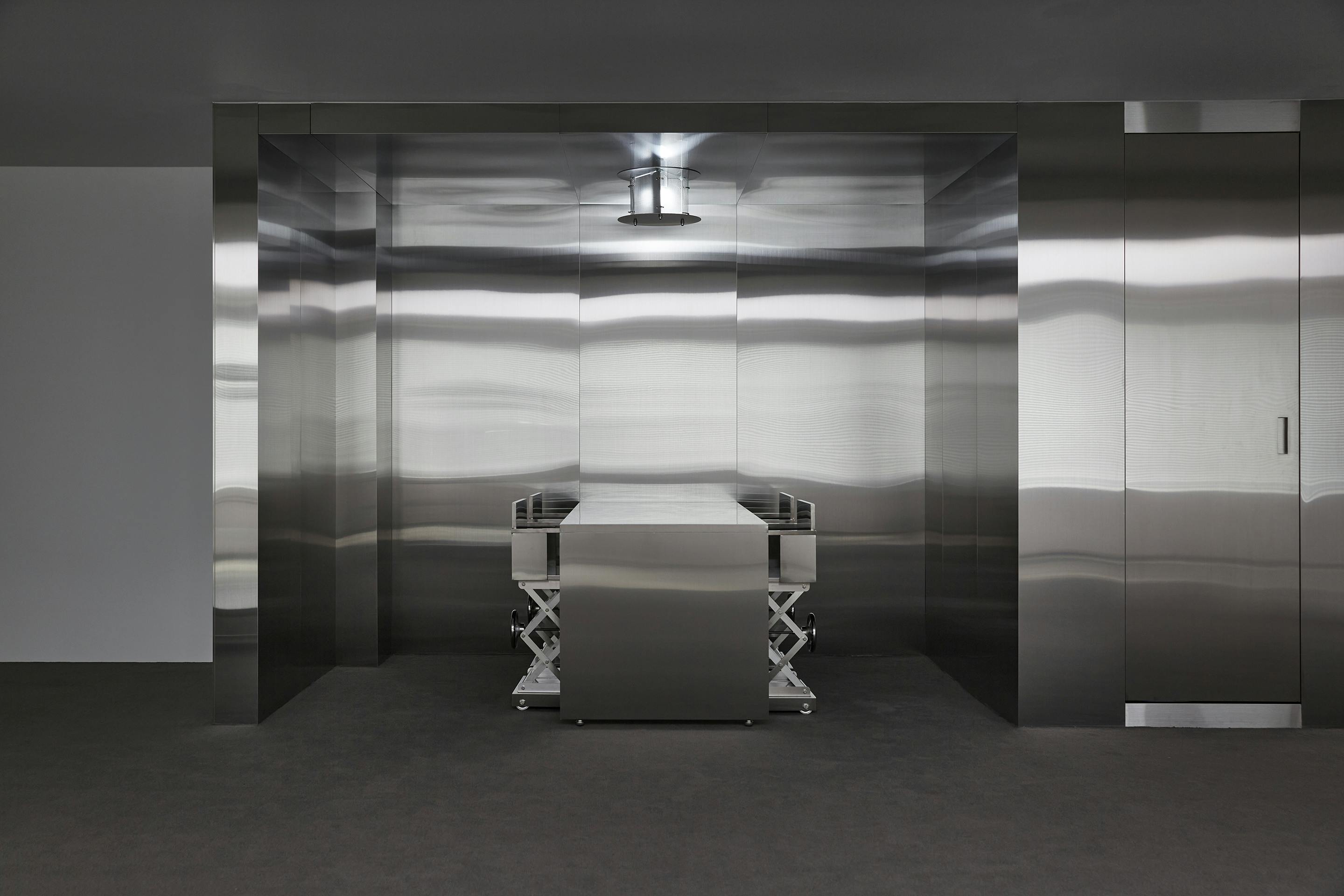
Hyunwoo Lee
Hyunwoo Lee questions objects' social context, functions, and meanings. When these elements converge into the body of a sculpture, he explores the context of the resulting images and redefines their values.

Hyunwoo Lee, born in 1994, is an artist based in Seoul, South Korea.
He graduated with a Bachelor's degree in Sculpture from Chung-Ang University in Korea. He raises questions about objects' social context, functions, and meanings. When these elements converge into the body of a sculpture, he explores the context of the resulting images and redefines their values.



'Parenthesis' at G Gallery
As I was writing the preface to this exhibition, I thought back to the first time I met the artist. He had a harsh-looking buzz cut, a slick nose piercing about the width of a smoothie straw, and was wearing a pair of shorts with a pattern of cute dragon characters that looked like something straight out of an animated children’s show. We spoke for quite a while, but during our long conversation, his expression and posture remained unchanged no matter what I did, but he would occasionally laugh quietly, his smile a deep curve on his face, or reach for the heavens to stretch out his limbs. In other words, he was very true to being himself. Even now, seeing that nothing has changed since then, it is clear that he has never harboured any pretence or crafted a narrative for our relationship from our first encounter until now.
An honest life, I imagine he is living such a life. Honesty in the sense of being upright and righteous, and without falsehood or fabrication in the heart, typically means the unity of front and back, outside and inside, which is oftentimes moving, evoking the feeling of ‘gam-dong (感動, movement of the heart).’ The word ‘gam-dong’ unites the seemingly opposite concepts of mental emotion (gam) and physical movement (dong). The movement of emotions from one extreme opposite to the other, from negative to positive and vice versa, and the ambivalence of combining the two words can be seen as the premise of profound transformation. This type of transformation, which can only be encountered by pushing oneself to the most unfamiliar extremes of physical and psychological energy, is a movement that leaps across the vast spectrum of space and time in a single step. Thus, transformation goes beyond meaning and becomes language itself, the simplest and most densely condensed image. Perhaps because of the resemblance to such a process, people are moved (feel gam-dong) by nature. We may not fully perceive all of nature's journeys and cause-and-effect relationships, the narrative of birth and growth, ageing and death, and all of its trials and tribulations, both microscopic and macroscopic, repeated countless times. Yet, we understand it on an instinctual level. Nature, as we see it today, does not explicitly explain it, but it does not hide it either. We encounter a sublime overturning of emotions—a profound transformation—when nature appears as a mass of time, sincere in the present, without any exaggeration, overwhelming the understanding and explanation of any particular point of view.
In the past, the artist has refrained from explaining the context behind his work, hoping that they would be accepted as nature itself. However, in this exhibition, all the artworks, as can be seen through the exhibition title 'parenthesis,' both clearly elaborate on but also omit the most personal and visible processes of metamorphosis, such as insects hatching from eggs, chrysalis, and moulting, by emphasising the key moments of transformation. In addition, the artist focuses on the clusters, or the colony, a group of opposites that cannot survive as individuals. The patterns and movements created by the perfect match between the goals of each individual and the colony's goals are very moving. We often perceive a colony of insects with these same internal and external orientations as a single mass rather than a collection of many smaller individuals. This cluster, which can be seen as something based more on instinct than logical thinking circuits, contains various relationships such as symbiosis and parasitism, where only images remain rather than meaning. These relationships exist not only between the pieces presented in this exhibition but also between the artwork and the viewer and between the artworks themselves. The taxidermy Lee has often incorporated into his sculptures is used to preserve dead animals, and plants from decaying, the parts of their bodies that have been discarded from them, and the minerals and rocks, small chunks of flesh from the earth that are used as references and materials for the finishing on the surface of each of his pieces are all organisms that have gone through life and death and are separated from narrative and space and time, erasing the relationship of the tangled food chain and cluster. They illuminate the very form of these elements while leading to another metamorphosis and transformation. If we were to look past the functions of the symbol ‘()’, of the
compression of explanation and the supplementation of content, and regard only the shape of the two curved brackets relying on the other, we might discover that it is reminiscent of a chrysalis, which holds the power of potential transformation. Considering that this is the attitude the artist takes when creating his work and the way he views all subjects that have been created through artificial processes, his current works are a cluster of transformation, where the outside and the inside, which have never before touched, flip all sides to meet each other. The emotion travels at high speed across the farthest distance to the other side it can reach.
The sculptures of the artist, now in front of you, seek to meet you honestly. Honesty is not a synonym for goodness, nor does sparkling beauty always accompany it. It is like a shaved head, prickly, cute, like a dragon character, and pierces the flesh like a smooth piercing. This is the moment of honesty and transformation. If you don't hold back and move forward boldly, you may be able to feel the fleeting movement of the moment of transformation.
Exhibition Text by Jungmin Cho
Translated by G Gallery Curator, Suyong Lee
Sound by Jio Yoo



































